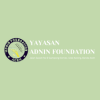Policy of Screening for Plagiarism
Adnin International Multidiciplinary Journal (AIMJ), as a respected international journal, aims to ensure that all authors are careful and comply with international standards for academic integrity, particularly related to plagiarism. AIMJ condemns and discourages the practice of plagiarism.
All articles submitted to AIMJ will be screened for plagiarism using plagiarism detection tools (Turnitin). This application is used to detect submissions that overlap with other published and submitted manuscripts. The AIMJ will immediately reject papers containing plagiarism or self-plagiarism.
Before submitting articles to reviewers, all submissions are subject to be checked of the similarity or plagiarism by a member of the editorial team. The similarity level tolerated for papers submitted to AIMJ must have as lower as posible plagiarism or less than 20% of the word. Authors cold examine our Similarity Check page for more information on how to interpret these reports.
Plagiarism is the exposure of another person’s thoughts or words as though they were your own, without permission, credit, or acknowledgment, or because of failing to cite the sources properly. Plagiarism cold take diverse forms, from literal copying to paraphrasing the work of another. We consider plagiarism is a crime, even when it occurs unintentionally, plagiarism is still a serious academic legal or ethical violation and is unacceptable in international academic publications. When the author learns specific information (a name, date, place, statistical number, or other detailed information) from a specific source, a citation is required (this is only forgiven in cases of general knowledge, where the data is readily available in more than five sources or is common knowledge). So that you cold tell if an author has plagiarized, we wouldlike to point out the following possible situations:
- An author can literally copy another author’s work- by copying word by word, in whole or in part, without permission, acknowledging or citing the original source. This practice can be identified by comparing the original source and the manuscript/work that is suspected of plagiarism.
- Substantial copying implies an author reproducing a substantial part of another author, without permission, acknowledgment, or citation. The substantial term can be understood both in terms of quality and quantity and is often used in the context of Intellectual property. Quality refers to the relative value of the copied text in proportion to the work as a whole.
- Paraphrasing involves taking ideas, words, or phrases from a source and crafting them into new sentences within the writing. This practice becomes unethical when the author does not properly cite or does not acknowledge the original work/author. This form of plagiarism is the more difficult form to be identified.
The AIMJ takes academic integrity very seriously, and the editors reserve the right to withdraw acceptance from a paper found to violate any of the standards set out above. As part of its general right to remove the article, AIMJ reserves the right to delete or make inaccessible files that contain or may contain content that breaks the law, applicable AIMJ policy, or the rights of third parties.








